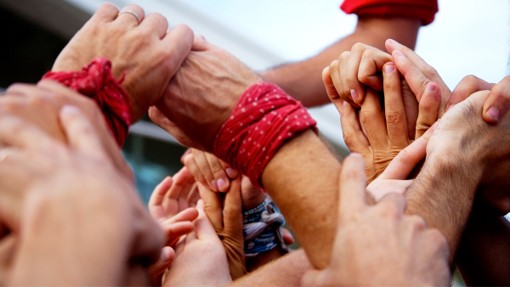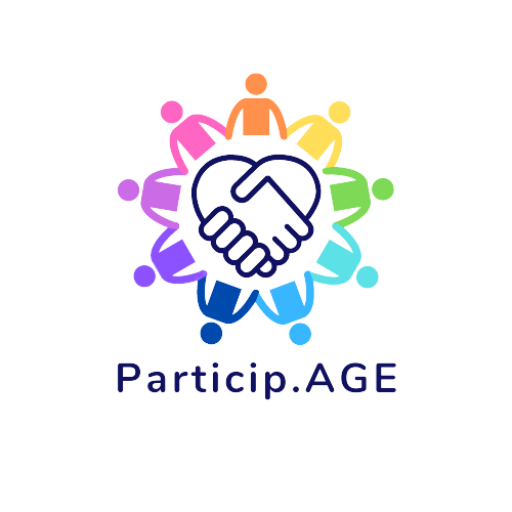What is Community Engagement?
What does this mean for practical work?
In practical terms, this involves a significant shift towards the social space, and the concept of social space orientation is pivotal.
Understanding this shift is crucial for collaborating within communities, especially in enhancing the social inclusion of ageing people with intellectual disabilities.
Key Points
• We must transition from traditional “protected institutions” to the dynamic social space we inhabit. Knowledge of social space orientation is essential for effective community work
Understanding social space orientation
• Social space orientation aims to create conditions that empower professionals to achieve social work goals.
• The focus here is on lived experience, addressing individual needs, and leveraging strengths and resources.
What is social space orientation?
For the Individual
• Has awareness of strengths, possibilities, and norms.
• Knowledge of available support and the ability to make a difference.
• Knows how to bring about personal wishes.
For the Municipality
• Community structures should offer opportunities for individual lifestyles.
• The enhancement of building, structural, and social resources.
• Improvement of living conditions for people with disabilities.
Principles of Community Engagement
1. Orientation towards the client’s will
2. Supporting personal initiative and self-help
3. Recognizing, activating, and using social space
4.Taking a broader perspective
5. Cooperation and networking

1. Orientation towards the client‘s will
Guiding Principles:
• Professionals should adopt a consistent orientation towards the client’s will, considering it as a driving force for action.
• Staff support clients in recognising and taking their own will seriously.
• Professionals need appropriate resources to facilitate the development of the client’s will.
Assignment
1.How do I recognise what I want?
2.How important is the will of clients in my everyday work? (1 no importance – 10 greatest importance)
3.In terms of your own work – What questions and answers arise from this guiding principle?


2. Supporting personal initiative and self-help
Guiding Principles:
• Staff empower clients to become active participants in their lives.
• Support is provided judiciously, emphasising experiences of self-efficacy and discovering new resources.
• Professionals cultivate an attitude of unwavering faith in individual potential.
Assignment
Reflect on the following questions:
• In which situations have I learnt the most lasting lessons?
• In which situations do I find it easy to encourage people with disabilities to act independently?
• How often do I experience this in my everyday life?
• What questions and answers arise from this principle for you as a specialist?

3. Recognising, activating and using social space
• Resources are categorized into four categories:
• Social resources = family, friends, neighbours, etc.
• Personal = health, physical constitution, education, experiences, beliefs, etc.
• Material = income, property, housing, etc.
• Infrastructural = transport, shopping facilities, club structure, school, leisure, etc.
Assignment
Please consider the following:
1.What resources of my clients do I usually work with?
2.What options do I have for researching my clients’ resources?
3.What questions and answers arise from this guiding principle?Reflect on the following questions:

4. Taking a broader perspective
Key elements:
• Staff need the ability to think beyond individual cases.
• It is important to remain open to other views, activities, and possibilities in the community.
• An open mind is important to avoid pigeonholing clients, and this helps to cultivate empathy for others.
Assignment
Key Elements:
• Staff need the ability to think beyond individual cases.
• It is important to remain open to other views, activities, and possibilities in the community.
• An open mind is important to avoid pigeonholing clients, and this helps to cultivate empathy for others.

5. Cooperation and networking
Key elements:
• Mutual assistance and cooperation across different levels is essential for effective cooperation and networking.
• Specialists needs to be awareness of their networks, and how to activate or use these networks.
• Building networks with various stakeholders requires openness, equitable communication, and respect for others’ concerns and goals.
Assignment
Please consider the following questions:
1.How easy is it for me to collaborate with others and give insights into my way of working?
2.Who are my most important cooperation partners in my daily work?
3.What questions and answers arise for them from this principle?

Dual-purpose community engagement
Community engagement projects and activities can have two key purposes:
• To empower ageing people with intellectual disabilities to participate in their community
• To involve and encourage citizens in the community in programmes for inclusion of ageing people with intellectual disabilities
These are cultural activities, which aim to raise awareness within the community and society, as well as to contribute to the social inclusion of the service users.
Other examples of Community Engagement activities
• Theatre groups
• Choir
• Folklore group
• Traditional dancing
• Sports activities
• Participation in national cultural or historical activities e.g. parades
• Awareness raising initiatives – International Day of People with Disabilities – December 3rd every year

Examples of Community Engagement partnerships

• Ministries of Health and Welfare
• Ministries of Education and Skills
• Ministries of Employment
• Ministries of Social Protection
• Public services
• Educational institutions
• Advocacy groups
• Social space orientation aims to create conditions that empower professionals to achieve social work goals with a focus on lived experience, addressing individual needs, and leveraging strengths and resources.
• Professionals should adopt a consistent orientation towards the client’s will, considering it as a powerhouse for action.
• Building networks with various stakeholders, requires openness, equitable communication, and respect for others’ concerns and goals.
